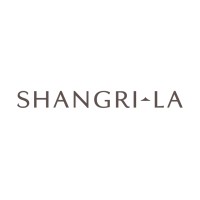
Shangri-La Group Company Cyber Security Posture
shangri-la.comHeadquartered in Hong Kong SAR, the Shangri-La Group has grown from a single hotel business to a diverse and integrated global portfolio comprising quality real estate and investment properties, wellness and lifestyle facilities. Today, the Group owns, operates and manages 100+ hotels under our family of four brands: Shangri-La, Kerry Hotels, JEN by Shangri-La, and Traders. We are part of the Kuok Group, one of Asia's most dynamic multinational conglomerates and a leader in properties, logistics, agribusiness, maritime and hospitality. From our strong base in Asia, we have expanded into key gateway cities and markets around the world. Our properties sit on some of the world’s most prestigious addresses and exotic destinations. Through the environments we have created, we enable people to come together to live, work, play, eat, and rest well.
Shangri-La Group Company Details
shangri-la-hotels-and-resorts
16150 employees
698443.0
721
Hospitality
shangri-la.com
Scan still pending
SHA_2070796
In-progress
Between 900 and 1000
This score is AI-generated and less favored by cyber insurers, who prefer the TPRM score.
 Shangri-La Group Global Score
Shangri-La Group Global Score.png)

Shangri-La Group Company Scoring based on AI Models
| Model Name | Date | Description | Current Score Difference | Score |
|---|---|---|---|---|
| AVERAGE-Industry | 03-12-2025 | This score represents the average cybersecurity rating of companies already scanned within the same industry. It provides a benchmark to compare an individual company's security posture against its industry peers. | N/A | Between 900 and 1000 |
Shangri-La Group Company Cyber Security News & History
| Entity | Type | Severity | Impact | Seen | Url ID | Details | View |
|---|---|---|---|---|---|---|---|
| Shangri-La Group | Breach | 100 | 5 | 10/2022 | SHA2110161122 | Link | |
Rankiteo Explanation : Attack threatening the organization's existenceDescription: Shangri-La Group suffered a data breach incident which leaked the personal information of more than 290,000 people who stayed at three hotels in Hong Kong. Some of the files were leaked from the databases, though the contents of the leaked data files may involve guest data. The data included the customers’ names, contact details, account numbers for the membership scheme, booking dates and affiliated companies. However, the hotel chain offered its customers in Hong Kong a free year of personal data protection. | |||||||
Shangri-La Group Company Subsidiaries

Headquartered in Hong Kong SAR, the Shangri-La Group has grown from a single hotel business to a diverse and integrated global portfolio comprising quality real estate and investment properties, wellness and lifestyle facilities. Today, the Group owns, operates and manages 100+ hotels under our family of four brands: Shangri-La, Kerry Hotels, JEN by Shangri-La, and Traders. We are part of the Kuok Group, one of Asia's most dynamic multinational conglomerates and a leader in properties, logistics, agribusiness, maritime and hospitality. From our strong base in Asia, we have expanded into key gateway cities and markets around the world. Our properties sit on some of the world’s most prestigious addresses and exotic destinations. Through the environments we have created, we enable people to come together to live, work, play, eat, and rest well.
Access Data Using Our API

Get company history
.png)
Shangri-La Group Cyber Security News
Shangri-La Hotel Suffered Data Breach Affecting 1 Million Guests
The breach was reported to the PDPC on July 16, 2022, after Shangri-La Hotel Ltd discovered that a threat actor had accessed and likely ...
How serious is the Shangri-La data breach? Experts weigh in.
First, it was Marriott International that fell prey to a social engineering ploy. Then came IHG, whose booking channels and other apps were ...
Shangri-La Hotels Hit by Data Breach Incident
A cybersecurity incident at Shangri-La Group hotels may affect hundreds of thousands of guests who visited the Asian hotel chain's flagship properties.
Shangri-La just revealed its hotels across Asia breached, guest data at large?
Share this story: Tags: data breach · data privacy. Categories:: Asia · Data · Latest · Security. It seems appropriate that during Cybersecurity Awareness ...
Shangri-La Races Towards a Greener Future
Shangri-La's Race for Hope national event kicked off today at Century Park Shanghai to celebrate the hotel group's collaborative ...
Viettel Cyber Security and Banbros Commercial Inc. addresses emerging cyber threats in the PH
As cyber-attacks increasingly pose significant risks to organizations and individuals alike, the need for strong cybersecurity measures has ...
Eight Shangri-La hotels in Asia hit by data breach
The Shangri-La hotel group admitted last Friday that a data breach occurred between May and July this year in eight of its properties across ...
Meet the finalists of the inaugural iTnews Benchmark Awards: Security
The inaugural iTnews Benchmark Awards: Security will celebrate the work of Australian security leaders including CISOs and CSOs for their ...
Hackers gain access to personal data of over 290,000 hotel guests in Hong Kong
More than 290,000 people are at risk of having their personal information leaked after staying at three hotels in Hong Kong, the city's privacy ...

Shangri-La Group Similar Companies
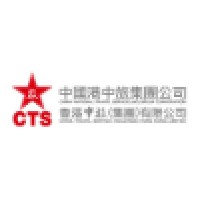
China National Travel Service (HK) Group Corporation
The China Travel Service (Holdings) Limited is the backbone of the state-owned enterprise directly supervise by Central government. It is also the largest travel corporation in China and was established in April 1928 by Chinese banker Chen Guangfu. From generation to generation, it is now a large st
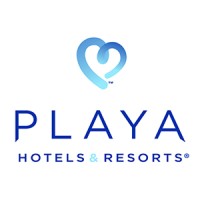
Playa Hotels & Resorts
Playa Hotels & Resorts N.V. (NASDAQ: PLYA, "Playa") is a leading owner, operator and developer of all-inclusive resorts in prime beachfront locations in Mexico, Jamaica and the Dominican Republic. Playa currently owns and/or manages a total portfolio consisting of 20+ resorts under the following bra
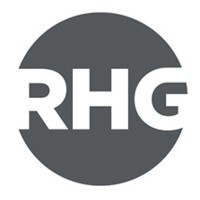
Radisson Hotel Group
Radisson Hotel Group is an international hotel group, operating in EMEA and APAC with over 1,320 hotels in operation and under development in +95 countries. The international hotel group is rapidly expanding with a plan to significantly grow the portfolio. The Group’s overarching brand promise is Ev
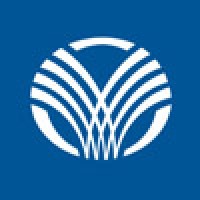
Rotana Hotel Management Corporation PJSC
Since inception, Rotana has grown to be the region’s largest hospitality management company, and a brand that is widely recognized and admired. Rotana currently manages a portfolio of over 100 properties throughout the Middle East, Africa, Eastern Europe and Türkiye offering a wide range of servic

Kerzner International
Kerzner International has built a diverse collection of iconic brands and luxury properties, earning international acclaim for pioneering destination-defining hospitality, delivering unrivalled service, and curating transformative guest experiences. We are renowned for creating hospitality brands

Caesars Entertainment
Caesars Entertainment, Inc. is the largest casino-entertainment Company in the U.S. and one of the world's most diversified casino-entertainment providers. Since its beginning in Reno, NV, in 1937, Caesars Entertainment, Inc. has grown through development of new resorts, expansions and acquisitions.

Frequently Asked Questions
Explore insights on cybersecurity incidents, risk posture, and Rankiteo's assessments.
Shangri-La Group CyberSecurity History Information
How many cyber incidents has Shangri-La Group faced?
Total Incidents: According to Rankiteo, Shangri-La Group has faced 1 incident in the past.
What types of cybersecurity incidents have occurred at Shangri-La Group?
Incident Types: The types of cybersecurity incidents that have occurred incident Breach.
Incident Details
Can you provide details on each incident?
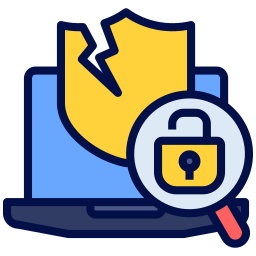
Incident : Data Breach
Title: Shangri-La Group Data Breach
Description: A data breach incident at Shangri-La Group leaked the personal information of more than 290,000 people who stayed at three hotels in Hong Kong. The leaked data included customers’ names, contact details, account numbers for the membership scheme, booking dates, and affiliated companies. The hotel chain offered its customers in Hong Kong a free year of personal data protection.
Type: Data Breach
What are the most common types of attacks the company has faced?
Common Attack Types: The most common types of attacks the company has faced is Breach.
Impact of the Incidents
What was the impact of each incident?

Incident : Data Breach SHA2110161122
Data Compromised: customers’ names, contact details, account numbers for the membership scheme, booking dates, affiliated companies
What types of data are most commonly compromised in incidents?
Commonly Compromised Data Types: The types of data most commonly compromised in incidents are customers’ names, contact details, account numbers for the membership scheme, booking dates and affiliated companies.
Which entities were affected by each incident?

Incident : Data Breach SHA2110161122
Entity Type: Hotel Chain
Industry: Hospitality
Location: Hong Kong
Customers Affected: 290,000
Data Breach Information
What type of data was compromised in each breach?

Incident : Data Breach SHA2110161122
Type of Data Compromised: customers’ names, contact details, account numbers for the membership scheme, booking dates, affiliated companies
Number of Records Exposed: 290,000
Personally Identifiable Information: customers’ names, contact details
Additional Questions
Impact of the Incidents
What was the most significant data compromised in an incident?
Most Significant Data Compromised: The most significant data compromised in an incident were customers’ names, contact details, account numbers for the membership scheme, booking dates and affiliated companies.
Data Breach Information
What was the most sensitive data compromised in a breach?
Most Sensitive Data Compromised: The most sensitive data compromised in a breach were customers’ names, contact details, account numbers for the membership scheme, booking dates and affiliated companies.
What was the number of records exposed in the most significant breach?
Number of Records Exposed in Most Significant Breach: The number of records exposed in the most significant breach was 290.0K.
What Do We Measure?
















Every week, Rankiteo analyzes billions of signals to give organizations a sharper, faster view of emerging risks. With deeper, more actionable intelligence at their fingertips, security teams can outpace threat actors, respond instantly to Zero-Day attacks, and dramatically shrink their risk exposure window.
These are some of the factors we use to calculate the overall score:
Identify exposed access points, detect misconfigured SSL certificates, and uncover vulnerabilities across the network infrastructure.
Gain visibility into the software components used within an organization to detect vulnerabilities, manage risk, and ensure supply chain security.
Monitor and manage all IT assets and their configurations to ensure accurate, real-time visibility across the company's technology environment.
Leverage real-time insights on active threats, malware campaigns, and emerging vulnerabilities to proactively defend against evolving cyberattacks.




